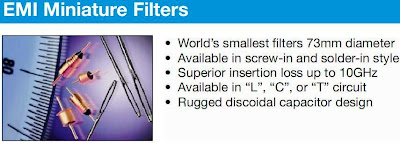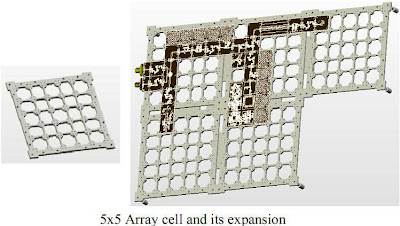RF-MEMS Switches for Reconfigurable
Integrated Circuits
Integrated Circuits
Abstract — This paper deals with a relatively new area of radio-frequency (RF) technology based on microelectromechanical systems (MEMS). RF MEMS provides a class of new devices and components which display superior high-frequency performance relative to conventional (usually semiconductor) devices, and which enable new system capabilities. In addition, MEMS devices are designed and fabricated by techniques similar to those of very large-scale integration, and can be manufactured by traditional batch-processing methods. In this paper, the only device addressed is the electrostatic microswitch—perhaps the paradigm RF-MEMS device. Through its superior performance characteristics, the microswitch is being developed in a number of existing circuits and systems, including radio front-ends, capacitor banks, and time-delay networks. The superior performance combined with ultra-low-power dissipation and large-scale integration should enable new system functionality as well. Two possibilities addressed here are quasi-optical beam steering and electrically reconfigurable antennas.
I. INTRODUCTION
I. INTRODUCTION
The 1990's have brought a profound change in radio-frequency (RF) technology driven largely by economic Tand geopolitical events. On one hand, the wind-down of the cold war has reduced the need for advanced RF systems, particularly sensors; on the other hand, the dawning of the information age has created a heightened interest and world-wide market for communications systems and networking of voice and data alike.The transition of RF technology from one era to the other has been both challenging and opportunistic. For the RF systems engineers, it has meant a shift of thinking from large centralized systems to smaller distributed systems. Along with this shift has come a change from long-range systems, having large RF transmit power, to shorter range systems, having relatively modest RF power. In many cases, the new smaller systems must be mobile or hand-held. The paradigm for these new systems is the cellular wireless network consisting of a single powerful base station feeding a local cell of hand sets acting like individual terminals or nodes of the network. The popular digital cellular and personal communications service (PCS) bands around 0.9 and 1.9 GHz, respectively, comprise much of the frequency spectrum being used for cellular purposes.
For technology engineers, the transition has been no less challenging. The premium devices and components formerly required to construct powerful centralized systems are no longer required or can no longer be afforded in many new distributed systems coming on line today. Instead, there is an emphasis on more affordable and integrable technology, which allows a greater degree of RF functionality per unit volume, even if at a lower level of performance than obtained with the former technologies. This has spawned widespread research and development of silicon-based RF integrated circuits (RFIC's), including deep-submicrometer Si CMOS and SiGe heterojunction bipolar transistors (HBT's). Taking advantage of the inherent manufacturability of Si very large-scale integration (VLSI), RFIC technology has found unique circuit and subsystem architectures well outside the traditional digital design. One example of this is the "RF system-on-a-chip," such as the family of integrated circuits (IC's) now commercially available for global positioning receivers.
This paper deals with another technology that has emerged in recent years with a comparable level of interest and more rapid development than RFIC's. The technology is the design and fabrication of microelectromechanical systems (MEMS) for RF circuits (RF MEMS). In some ways, MEMS represents the new revolution in microelectronics. It is similar to VLSI circuits in that it allows the execution of complex functions on a size scale orders of magnitude lower and at far less power than discrete circuits. However, MEMS enables this miniaturization on a class of sensors and transducers that traditionally were constructed on the model of a large, often cumbersome transducer or sensor coupled to a highly integrated VLSI readout circuit or processor. A good example of this is the MEMS accelerometer, now one of the largest single MEMS application through its incorporation in air bags [1]. At the same time, MEMS leverages VLSI through the use of common design and batch processing methodologies and tools. It is this commonality with VLSI that has been credited to a large extent for the rapid dissemination of MEMS into the commercial marketplace.
It is important to realize up front that RF MEMS does not necessarily imply that the micromechanical system is operating at RF frequencies. As will be discussed briefly, in the largest class of RF MEMS devices and components, the microelectromechanical operation is used simply for the actuation or adjustment of a separate RF device or component, such as a variable capacitor. In many of these devices, a key advantage of the MEMS devices compared to traditional semiconductor devices is electromechanical isolation. By this, we mean that the RF circuit does not leak or couple significantly to the actuation circuit. A second advantage is power consumption. Many of the RF MEMS devices under development carry out electromechanical coupling electrostatically through air (or vacuum). Hence, the power consumption comes from dynamic current flowing to the MEMS only when actuation is occurring. However, the implementation of RF MEMS does not come with impunity. Due to the mechanical actuation, they are inherently slower than electronic switches. The electromechanical actuation time is typically many microseconds or greater, which is substantially longer than typical electrical time constants in semiconductor devices. In addition, RF MEMS devices can exhibit the phenomenon of "stiction," whereby parts of the device can bonded together upon physical contact. Each of these issues will be discussed further.
II. MEMS AND MICROMACHINING
According to a recent definition, a MEMS is a miniature device or an array of devices combining electrical and mechanical components and fabricated with IC batch-processing techniques [2]. Critical to this definition is that MEMS has both device and fabrication aspects. There are several MEMS fabrication techniques currently in widespread use, including bulk micromachining, surface micromachining, fusion bonding, and LIGA, which is a composite fabrication procedure of lithography, electroforming, and molding. The most important technique for RF MEMS is surface micromachining. In short, surface micromachining consists of the deposition and lithographic patterning of various thin films, usually on Si substrates. Generally, the intent is to make one or more of the ("release") films freestanding over a selected part of the substrate, thereby able to undergo the mechanical motion or actuation characteristic of all MEMS. This is done by depositing a "sacrificial" film (or films) below the released one(s), which is removed in the last steps of the process by selective etchants. The variety of materials for the release and sacrificial layers is great, including many metals (Au, Al, etc.), ceramics (SiO and Si N ), and plastics (photoresist, polymethyl methacrylate (PMMA), etc.). Depending on the details of the MEMS process and the other materials in the thin-film stack, the release and sacrificial layers can be deposited by evaporation, sputtering, electrodeposition, or other methods.
According to a recent definition, a MEMS is a miniature device or an array of devices combining electrical and mechanical components and fabricated with IC batch-processing techniques [2]. Critical to this definition is that MEMS has both device and fabrication aspects. There are several MEMS fabrication techniques currently in widespread use, including bulk micromachining, surface micromachining, fusion bonding, and LIGA, which is a composite fabrication procedure of lithography, electroforming, and molding. The most important technique for RF MEMS is surface micromachining. In short, surface micromachining consists of the deposition and lithographic patterning of various thin films, usually on Si substrates. Generally, the intent is to make one or more of the ("release") films freestanding over a selected part of the substrate, thereby able to undergo the mechanical motion or actuation characteristic of all MEMS. This is done by depositing a "sacrificial" film (or films) below the released one(s), which is removed in the last steps of the process by selective etchants. The variety of materials for the release and sacrificial layers is great, including many metals (Au, Al, etc.), ceramics (SiO and Si N ), and plastics (photoresist, polymethyl methacrylate (PMMA), etc.). Depending on the details of the MEMS process and the other materials in the thin-film stack, the release and sacrificial layers can be deposited by evaporation, sputtering, electrodeposition, or other methods.
Surface micromachining has been used for a long time, dating back to MEMS work of the 1960's at Westinghouse. A breakthrough in surface micromachining has come in the form of dry etching, particularly reactive-ion etching (RIE). By mixing reactive chemicals in a plasma discharge and adding a semiconductor wafer with thin films deposited on top, select materials on the surface can be etched away at useful high rates and with high levels of material selectivity. For example, chlorine-bearing compounds in a high-density plasma can yield nearly isotropic silicon etching with a selectivity of silicon-to-SiO of better than 100 : 1. By the same token, low-pressure plasma etching [e.g., inductively coupled plasma (ICP)] allows independent control of the ion density and energy.
Neyker Stewart Zambrano
CRF



















































